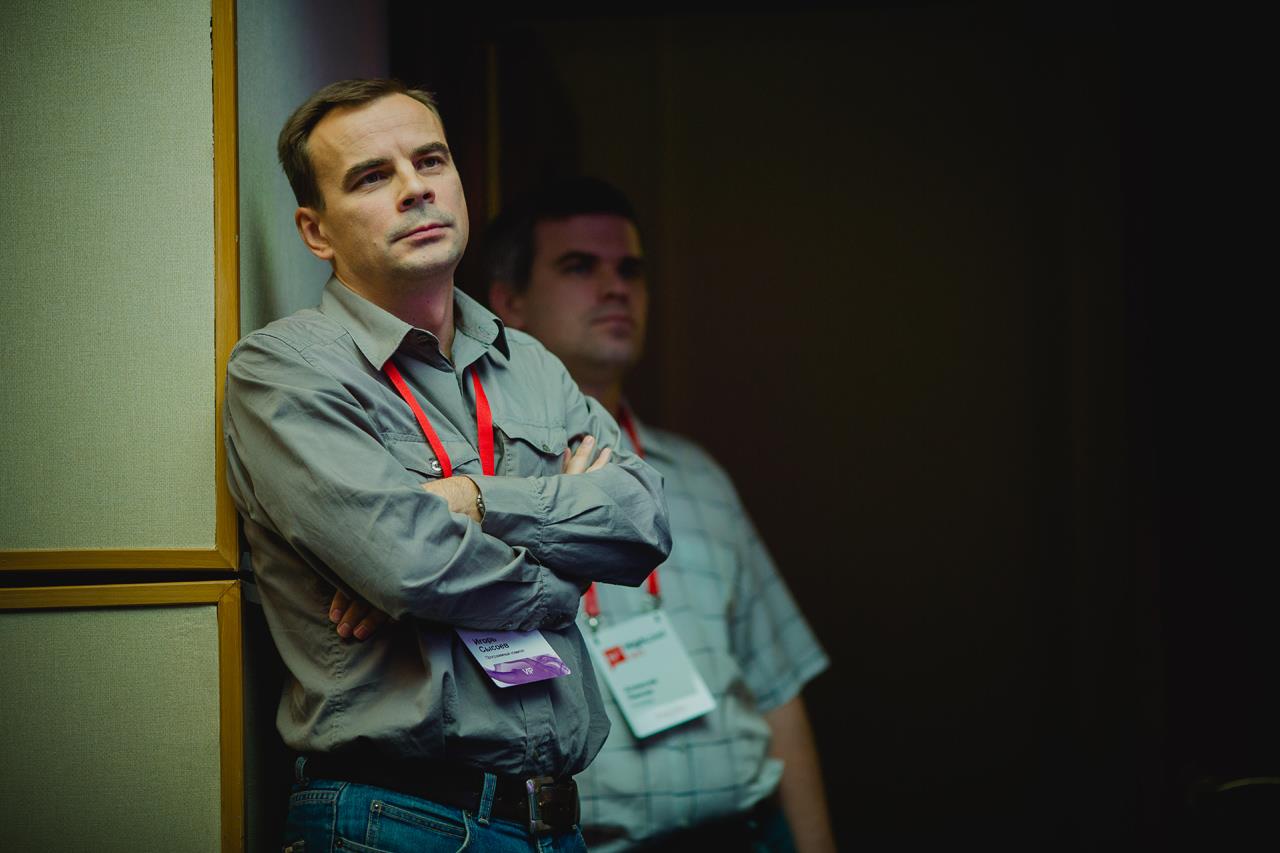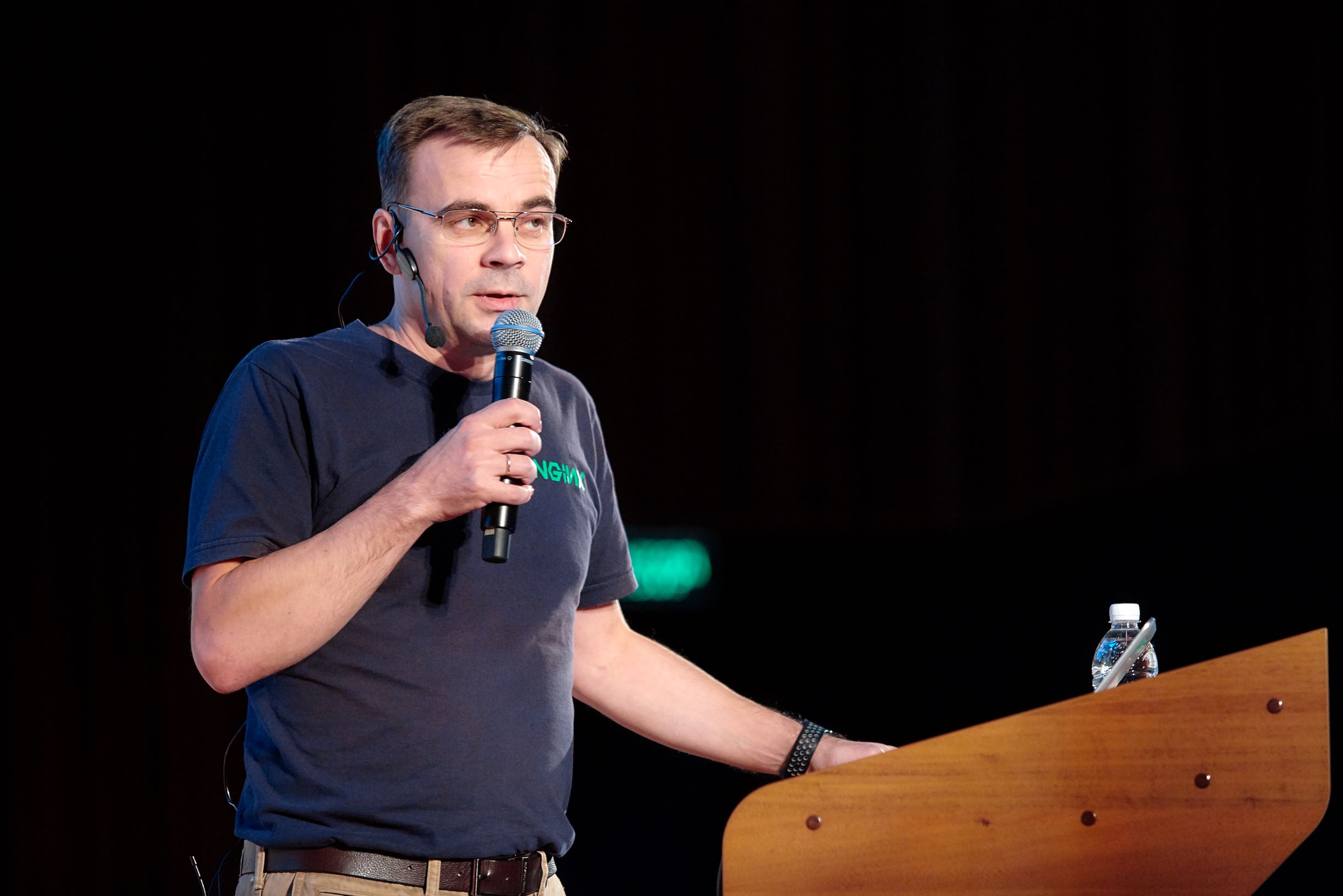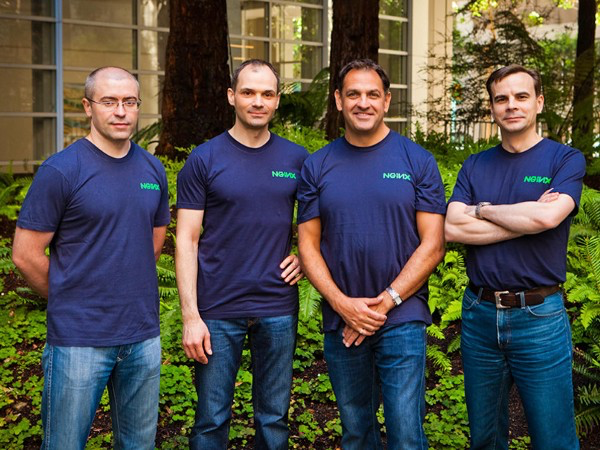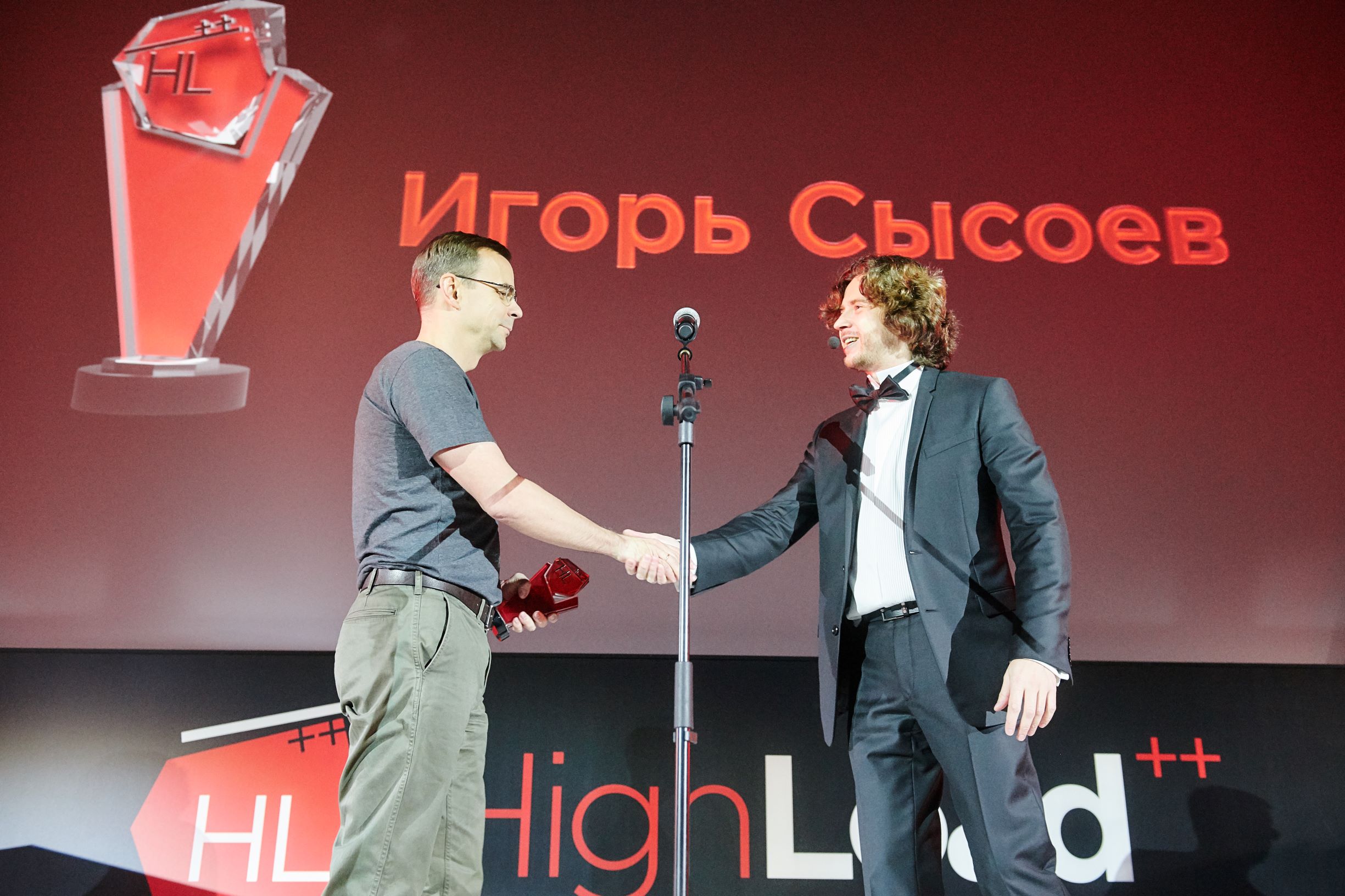The success story of nginx, or “Everything is possible, try it!”

Igor Sysoev , the developer of the nginx web server, a member of the large HighLoad ++ family, did not just stand at the origins of our conference. I perceive Igor as my professional teacher, the master, who taught me how to work and understand high-load systems, which determined my professional path for a decade.
Naturally, I could not get past the resounding success of the NGINX team ... And I interviewed, but not Igor (he is still an introvert programmer), and investors from Runa Capital , who saw nginx ten years ago, built a business around him infrastructure, and now led a deal, unprecedented in size for the Russian market.
')
The purpose of the article under the cut - once again confirm - everything is possible! Try it!
Head of the HighLoad ++ Program Committee Oleg Bunin: Congratulations on a successful deal! As far as I can tell, you managed to preserve and support Igor’s desire to continue working as a programmer and, at the same time, build the entire business infrastructure around him - this is just a dream of any developer. Right?
My companion managing partner of Runa Capital Dmitry Chikhachev: This is so. This is a great merit of Igor and his co-founders Maxim and Andrei (Maxim Konovalov and Andrei Alekseev), because from the very beginning they were ready for this infrastructure to be built around them. Not all startups adequately assess their own strengths and capabilities. Many want to lead or lead the whole process.
- That is, the NGINX team by and large dismissed itself from the business unit, or what?
Dmitry: No, they did not move away from the business unit, why? Maxim managed the operating unit as an operating director. Andrey was engaged in BizDev, Igor continued to be engaged in development - that he likes. Everyone was engaged in what his strengths and what he likes.
More than 15 years ago, the nginx project was launched, 8 years since the foundation of the company.
The investor’s view, described in the article, maybe slightly simplified, only grabs a few turning points.
But the foundation of everything is the years of hard work of the team and the founders involved in finding and choosing a CEO, opening an American office, forming a business model and, most importantly, in continuous product development.
For what we do not get tired of the whole HighLoad-community, tell them a big human thanks! You make life easier for us!
But they all understood that in order to build a multi-million dollar business in the USA, a person of a different caliber is needed, with a different background. Therefore, even in the first round of negotiations there was an agreement with investors that such a person would be found. They became Gus Robertson, he fits on all these criteria.
- That is, it was originally planned to enter the American market?
Dmitry: NGINX is a b2b business. Moreover, it is not very widely known to users, since it operates at the infrastructure level, one can say middleware The main b2b market is the USA - 40% of the world market is concentrated there.
Success in the US market predetermines the success of any startup.
Therefore, a logical plan: to go to the United States, immediately hire a person who will lead the American company, will develop the business and attract American investors. If you want to sell infrastructure software in the US, then it is important that you have American investors behind your back.
- Who came to whom: you to nginx, nginx to you?
Dmitry: We had many different points of contact. Probably, we showed great initiative, because even then nginx was noticeable. Although it was not yet a company, and the market share was relatively small (6%), investor interest was already large. The deal was competitive, so we, of course, were active.
- In what condition was the product? There was no company, but were there sketches of a commercial enterprise version?
Dmitry: There was an open source nginx web server. He had users - 6% of the global market. In fact, it is millions, even tens of millions of web sites. But, nevertheless, the company did not exist, there was no business model. And since there was no company, there was no team: there was Igor Sysoev - the developer of nginx and a small community around.
This is a very interesting story. Igor began writing nginx for a long time - in 2002, and released in 2004. In reality, interest in him appeared only in 2008, in 2011 he attracted money. Few people think about why so much time has passed. In fact, there is a logical technical explanation for this.
In 2002, Igor worked at Rambler, and there was one problem that he, as a system administrator, solved - the so-called C10k problem, that is, providing the server with more than ten thousand simultaneous requests at peak load. Then this problem only appeared, because large loads on the Internet only came into use. Only single sites have come across it - such as Rambler, Yandex, Mail.ru. For most websites this was irrelevant. When a day for 100-200 requests, no nginx is needed, Apache will do fine.
As the Internet became more and more popular, the number of sites that faced the problem of C10k grew. More and more sites began to require a faster web server to handle requests, such as nginx.
But the real explosion of the load occurred in 2008-2010 with the advent of smartphones.
It is easy to imagine how immediately the number of requests for servers increased. Firstly, the time spent using the Internet has increased, because clicking on links has become possible everywhere, and not just sitting at the computer. Secondly, the user’s behavior itself has changed - with touch screen, link navigation has become more chaotic. Here you can add social networks.
This led to the fact that the peak load on the Internet began to grow exponentially . The total load grew more or less evenly, but the peaks became more and more tangible. It turned out that the very problem C10k became ubiquitous. At this moment nginx and flew.

- Tell us how the events developed after the meeting with Igor and his team? When did the development of infrastructure, business ideas begin?
Dmitry: First a deal was formed. I have already said that the deal was competitive, and in the end a syndicate of investors was formed. We became part of this syndicate with BV Capital (now e.ventures) and Michael Dell. At first they closed the deal, and after that they began to think about the question of finding an American CEO.
How did you close the deal? After all, it turns out that you did not even know which business model and when it will pay off? Just in the team, in the cool product invested?
Dmitry: Yes, it was a pure sowing deal. We did not think at that moment about the business model.
Our investment thesis was based on the fact that NGINX is a unique product with a significantly growing audience.
He solved a rather serious problem for this audience. I have a favorite test, a litmus test for any investment - whether the product solves a massive and painful problem. NGINX passed this crash test with a bang: the problem was massive, loads grew, sites lay. And it was painful, because the era came when the website became what is called mission critical.
In the 90s, people reasoned like this: the site is lying - now I’ll call the sysadmin, in an hour they’ll pick it up - fine. In the late 2000s, for many companies, the 5-minute down-time became equal to the actually lost money, reputation, etc. The fact that the problem was painful is one side.
The second side that we, as investors, look at is the quality of the team . Here we were impressed by Igor and his co-founders. It was a complementary experience and a unique product that was developed by one person.
- It is clear that the team also played its role with a certain number of competencies that complement each other.
Dmitry: It seems to me right that Igor alone developed the product, but when the moment of creating the business approached, not one rushed there, but with partners. Looking at the 10-year investment experience, I can say that having two co-founders, of course, reduces the risks. The optimal number of cofounders is two or three. One is very small, and four is already very much.
- What happened next? When the transaction has already taken place, but there has not yet been a developed business idea.
Dmitry: A deal is concluded, a company is registered, documents are signed, money is transferred - everything ran. In parallel with the development of the business part, they hired a development team that began working on the product. Andrei Alekseev as BizDev lined up first relationships with potential customers to collect feedback. All together they were thinking about a business model, and all together they were looking for a top manager who would develop American business and head the company in essence.
- And how did you find it? Where? I have no idea how to do this.
Dmitry: All investors and the board of directors were engaged in this. In the end, the choice fell on Gus Robertson. Gus worked for Red Hat, whose top manager was our investor. We turned to Red Hat, because it is open source, we said that we are looking for a person who is able to lead the business and develop it into the billionth. They recommended Gus.
The deal with NGINX was closed in 2011, and in 2012 we already met with Gus, and we immediately liked him very much. He had a background in open source from Red Hat - at that time it was the only company with a multi-billion dollar capitalization in open source. In addition, Gus was engaged in business development and sales - what we need!
In addition to the background and experience, we liked his personal qualities - he is an intelligent, insightful person with a quick mind, and, not least, it seemed to us that he had a good cultural conformity with the team. Indeed it happened. When they met, it turned out that everything is on the same wavelength, everything is in excellent interaction.
We made a proposal to Gus, and at the end of 2012 he began work. Gus also suggested investing his own money in NGINX. All investors are impressed. Due to Gus' high involvement, he joined the founding team and was perceived by all as a co-founder of the company. Subsequently, he was one of the four. There is a famous photo, where all four are in NGINX T-shirts.

The photo is taken from a note by Dmitry Chikhachev about the history of cooperation between NGINX and Runa Capital.
- Did you immediately find a business model, or did it change later?
Dmitry: We managed to find the model right away, but before that we had some discussion about how and what. But the main discussion was about whether to continue supporting the open source project, whether to leave nginx free, or gradually get everyone to pay.
We decided that it would be right to use the power of the community, which stands behind nginx, not to disappoint him and not to abandon support for an open source project.
Therefore, we decided to keep nginx in open source, but to create an additional special product, called NGINX Plus. This is a commercial product based on nginx, which we license to enterprise customers. Now the main business of NGINX is the sale of NGINX Plus licenses.
The main differences between the open and paid versions are:
- NGINX Plus has additional functionality for an enterprise, most notably load balancing.
- In contrast to the open source product there is user support.
- This product is easier to handle. This is not a constructor that you need to build yourself, but a ready-made binary package that can be deployed on its infrastructure.
- How does open source and commercial product interact? Any functions from a commercial product flow into open source?
Dmitry: Open source product continues to evolve in parallel with the commercial one. Some functionality is added only to a commercial product, something there and there. But the core of the system is obviously the same thing.
The important point is that nginx itself is a very small product. In my opinion, there are only about 200 thousand lines of code in it. The challenge was to develop additional products. But this already happened after the next round of investment, when several new products were launched: NGINX Amplify (2014-2015), NGINX Controller (2016) and NGINX Unit (2017-2018). The product line for enterprise has expanded.
- How quickly did it become clear that you guessed the model? Did you get a return on investment, or did it become clear that the business is growing and will it bring money?
Dmitry: The first year with revenue was 2014, then we earned a conditional first million dollars. At that moment it was clear that there is demand, but the economy was not completely clear from the point of view of sales, as far as the model would allow to scale.
Two years later, in 2016-2017, we already understood that the economy is good: the outflow of customers is small, there is up-sell, and customers, having started using NGINX, buy it more and more. Then it became clear that this can be scaled further. That, in turn, led to additional rounds of funding, which have already begun to scale up the organization of sales, hiring additional people in the US and other countries. Now NGINX has sales offices in the States, Europe, Asia - worldwide.
- Big company NGINX now?
Dmitry: Already about 200 people.
- Basically, probably these are sales and support?
Dmitry: The development is still quite a large part of the company. But sales and marketing are a big part.
- The development is mainly involved in the Russian guys who are sitting in Moscow?
Dmitry: Development is already underway in three centers - this is Moscow, California, Ireland. But Igor continues to live in Moscow most of the time, go to work, program.
We traced all the way: beginning in 2002, in the 2004 issue of nginx, growth in 2008–2009, 2010 acquaintance with investors, in 2013 the first sales, in 2014 the first million dollars. And what about 2019? Success?
Dmitry: In 2019 - a good way out.
- Is this a normal cycle for a startup in time, or an exception to the rule?
Dmitry: This is a completely normal cycle in time - depending on what to count. When Igor wrote nginx - I knowingly told this background - nginx was not a mass product. Then, in 2008–2009, the Internet changed, and nginx became very popular.
If you count just from 2009-2010, the cycle at 10 years is completely normal , considering that this is essentially the moment when the product has just started to be in demand. If we count from the 2011 round, then 8 years from the time of the first seed investments is also a normal period.
- What can you tell now, completing the topic with NGINX, about F5, about their plans - what will happen to NGINX?
Dmitry: I do not know - this is the corporate secret of F5. The only thing I can add is that if you google “F5 NGINX” now, then the first ten links will be news that F5 has acquired NGINX. Two weeks ago, a search for the same query would first give ten links on how to migrate from F5 to NGINX.
- Would not kill a competitor!
Dmitry: No, why? The press release outlines what they are going to do.
- In the press release, everything is good: we will not touch anyone, everything will grow as before.
Dmitry: I think that these companies have a very good cultural coincidence. In this sense, they both work in the same segment - networking and workload. So everything will be fine .
- Last question: I am a brilliant programmer, what should I do to repeat success?
Dmitry: In order to repeat the success of Igor Sysoev, you must first figure out what problem to solve, because the code is paid money only when it solves a massive and painful problem.
- And then to you? And then you will help.
Dmitry: Yes, with pleasure.

Thank you very much Dmitry for the interview. With Runa Capital, we will see you again soon at Saint HighLoad ++ . In a place that we can now assert with complete confidence, collects the best developers not from Russia, but from the whole world. Who knows, maybe in a few years we will all ardently discuss the success of one of you. In addition, it is now clear where to start - look for a solution to an important problem!
And be prepared, like the nginx team, for years of hard work.
Source: https://habr.com/ru/post/444318/
All Articles